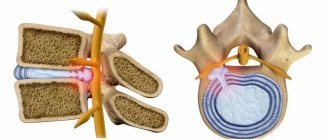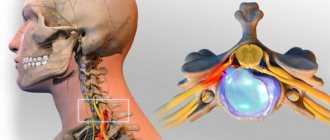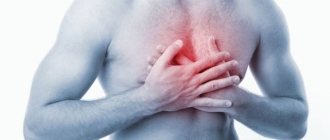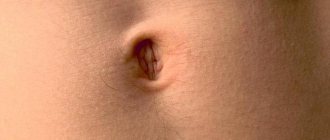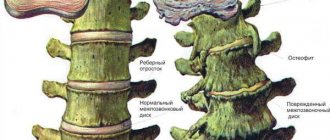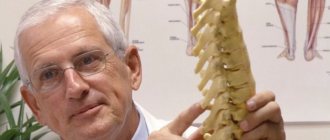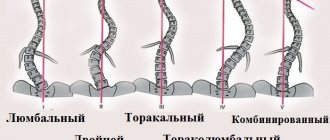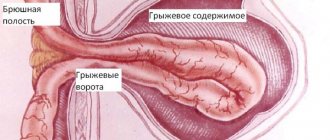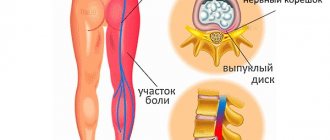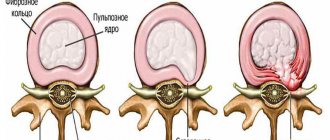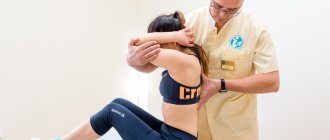About lumbago disease 2010
Currently, lumbar spinal hernia is diagnosed even in young people aged 20–25 years. This is due to the fact that the younger generation leads a sedentary lifestyle with a lack of regular physical activity on the lumbar muscles. Intervertebral hernia of the lumbar region is a complication of long-term lumbosacral osteochondrosis. This degenerative dystrophic disease begins at the age of 18 – 20 years and gradually leads to the fact that the fibrous ring of the disc is completely destroyed. The nucleus pulposus located inside it comes out. This is a herniated disc in the lumbar spine, which provokes constant inflammation, irritation of surrounding tissues, and the development of ischemia of the radicular nerves and blood vessels.
All these degenerative dystrophic changes lead to the fact that the adjacent disc gradually begins to collapse. Compression of the radicular nerves and their branches provokes a disruption of the innervation of the internal organs of the pelvic cavity and abdomen. Constipation, diarrhea, bladder hyperfunction, erectile dysfunction in men, infertility or early menopause in women, varicose veins of the lower extremities, hemorrhoids, etc. begin. All these complications of advanced osteochondrosis, in which a herniated lumbar intervertebral disc has formed, can be excluded if early comprehensive treatment is carried out.
Currently, techniques have been developed that allow treating disc herniation without surgery. This is manual therapy in combination with therapeutic exercises, kinesiotherapy, traction traction of the spinal column, acupuncture, etc. The only situation where it is impossible to help a patient without surgery is the sequestration of a hernial protrusion - separation of part of the nucleus pulposus or its complete exit from the fibrous ring and sliding along the spinal column. In this condition, only surgery can alleviate the patient's condition.
Timely consultation with a doctor in the event of the development of a vertebral hernia allows treatment with conservative methods. If you experience pain in the lumbar region, do not ignore it, consult a doctor and undergo a full examination. With the help of X-rays and MRI examinations, an accurate diagnosis can be made.
Causes and symptoms of the disease
A hernia of the lumbar spine is a serious illness that leads to serious consequences. To cure this disease, you must first understand why it appears.
A lumbar hernia appears in the following cases:
- Lifting weights. Enormous load leads to the appearance of a hernia.
- Osteochondrosis. This disease is a frequent companion to hernia.
- Excess weight that puts pressure on the lower back.
- Passive lifestyle. Due to relaxed muscles, the lower back cannot withstand the load.
- Poor nutrition. If there is a lack of essential vitamins and minerals, problems with the bone tissues of the spine arise. If you drink little water, the water balance in the human body is disrupted.
- Bad habits. Excessive consumption of coffee and alcohol leads to impaired blood flow. Smoking reduces the amount of oxygen supplied to soft tissues.
- Stress and nervousness. Any pathology occurs on a nervous basis.
- Age. More often, older people, aged 40 and above, encounter this disease.
There are many reasons for a hernia in the lower back
A hernia of the lumbar spine differs from other diseases in a rich list of symptoms that extend to both the lower back and lower extremities. These include:
- sharp sudden pain;
- difficulties with movement, turns, bends;
- the pain goes from the lower back all the way to the feet;
- numbness, burning, tingling, “cotton” feeling in the legs;
- change in sensitivity in the legs.
Common symptoms of a lumbar disc herniation are as follows:
- headache;
- dizziness;
- changes in blood pressure up or down;
- problems with the vestibular system;
- deterioration of hearing and vision.
Video - About lumbar disc herniation
How I treated a hernia
So the diagnosis is made, the treatment method is prescribed. That's what I needed from the hospital and doctors. Couldn't they have done this right away at the hospital? No, they’ll prescribe pills with injections and go for a walk Vasya, that is, Ruslan.
After determining the cause of the pain and recommendations from a specialist, I got down to business. Started taking B vitamins and calcium. Semyon Petrovich advised making calcium from eggshells, crushing it and mixing it with lemon juice, drinking a teaspoon every day.
Next came my 2 months of rehabilitation. I dug through a bunch of information on spinal restoration and back treatment for intervertebral hernia.
Every morning I took B vitamins, did a set of exercises, in the evening I took calcium in the form of ground eggshells and squeezed lemon juice, and again exercised through the pain.
Every day I got up in the morning through pain, did exercises with pain in my lower back and right leg. By the way, I forgot to say that after the injections, what the neurologist prescribed, my whole right leg ached with a dull pain, sometimes it hurt so unbearably that I couldn’t find a place for myself.
2 months after these injections, my leg just stopped hurting and I was able to lift it without pain. I don’t know what kind of injections these are, they don’t cure, they only cripple.
While searching for information on the Internet on the treatment of hernia, I came across a site where the author had a hernia even larger than mine - 1.4 cm. I subscribed to his newsletter and began to receive useful information by e-mail on restoring the spine, strengthening the back, stretching the spine and proper diet.
Table with a schedule of my actions to restore my back
I made a chart in the table and noted all the actions that needed to be done in a day - download the recovery chart.
Lyapko applicator from Argo company - top view
Lyapko applicator in the Argo company - side view
I lay on this applicator and put a tick in the table, which means I completed the task. The main thing is not to skip tasks and complete them.
I printed out this declaration and hung it on the toilet door.
I read the declaration and put a tick next to the item in the table. I hung this printed sheet in the toilet - download the declaration. In short, you sit and declare in the morning 
I drank sesame milk and vitamin B - ticked the box. Then I did some exercises and put another tick in front of it.
Bandage with polymedel inside
Dressed in polymedel - tick. This is the kind of bandage I put on, with a polymedel film inside. Polimedel is a polymer film electrified using original technology that retains its properties for a long time. Helps stop inflammatory processes and improves tissue regeneration.
Polymedel packaging, sold by Argo
I’ll tell you a secret, by wearing such a bandage with polymedel, I felt how my lower back pain subsided at first, and then over time the pain completely went away. Spare no expense, order Polymedel, the applicator included and do exercises, this is what will help you, tested on yourself.
Why spend money on supposedly all kinds of treatment, in the form of injections, painkillers, surgeries, etc. Better spend it on things you really need. As they say, saving a drowning man is the work of the drowning man himself.
You choose which path to follow, listen to doctors or help yourself. I personally would not trust doctors with my health. And you?
This is how I dressed and wore two bandages with polymedel on the lower back
This is how I put on 2 bandages with Polymedel and wore them under my clothes for 3 hours, took them off for 2 hours, then put them on for another 3 hours.
Orthopedic corset
Semyon Petrovich recommended this corset to me, it’s a good thing, but expensive, almost 10 thousand. I only wore it for the first time when I had to sit in the car for a long time on the road.
And now I don’t wear it, at first I only wore it for 2 hours. And remember, no matter how good the corset is, you can’t wear it for a long time, you need to train your back muscles. And after wearing a corset for a long time, the lower back muscles simply atrophy.
Table of my measurements: lying leg raises and bending to the floor
At the end of each week, my wife measured with a tape measure how much of which leg I lifted from a supine position and wrote it down in a table - download the table of measurements.
I also wrote down how many cm I don’t reach the floor when bending forward. The table shows how I improved my readings almost every week and after 2 months I can walk normally with my fast gait.
Don’t even think about having an operation to cut out a hernia, you will only make your situation worse. And the hernias will appear higher. Yes, at first you will feel better, there will be no pain. But there is no need to interfere, the body will cope on its own, you just help it and that’s all. If you want to be a regular client of a surgeon, do the operation!
Preventive actions
At the end of treatment, the doctor prescribes preventive measures to strengthen the body and avoid relapse. To do this you need to do the following:
- Try to lead an active lifestyle. You need to properly organize and combine your workday and rest. Move more, exercise daily, swim in the pool.
- Sleep on orthopedic mattresses. Only they have sufficient rigidity.
- Get rid of excess weight.
- Avoid putting stress on your lower back. When you have to lift weights, you should strain your legs, not your back and lower back.
- Get rid of bad habits such as smoking, alcohol and coffee abuse.
- Adjust your diet. It is necessary to increase the consumption of meat, fish, dairy products, vegetables and fruits. At the same time, you should avoid canned, fried, spicy and salty foods.
A hernia in the lower back is a problem that can be solved
Prices for orthopedic mattresses
Following these rules in combination with motivation will help maintain health and avoid the occurrence of intervertebral herniation in the future.
Hernia of the lumbar spine symptoms
When an intervertebral hernia forms, a person will encounter symptoms:
- pain in the lower back (lower back), which gets worse with movement;
- pain may spread to the buttocks;
- feeling of pain in the sides and back of the legs;
- disappearance of knee reflexes;
- feeling of numbness in the legs;
- malfunctions of the pelvic organs.
Schmorl pathology has no symptoms; the mobility of the spine in this region decreases.
Intervertebral hernia - clinics in
Choose among the best clinics based on reviews and the best price and make an appointment
Family
Oriental Medicine Clinic "Sagan Dali"
Moscow, prosp.
Mira, 79, building 1 Rizhskaya
+7
- Consultation from 1500
- Diagnostics from 0
- Reflexology from 1000
0 Write your review
Family
Back and joint treatment clinic No. 1
Moscow, Pyatnitskoye sh., 6, bldg.
1 VolokolamskayaMitino
+7
- Consultation from 1000
- Treatment courses from 7000
- Massage from 1500
10 Write your review
Family
Institute of Traditional Oriental Medicine
Moscow, Filippovsky lane, 18
Arbatskaya (FL)
8-(495) 691-66-69
registry
- Consultation from 1200
- Manual therapy from 1300
- Physiotherapy from 700
0 Write your review
Show all Moscow clinics
Operation description
At the AXIS clinic, they perform two types of operations on a herniated intervertebral disc - with removal of part of the cartilage that compresses the nerve structures, and without removal:
- An operation to remove part of the cartilage that compresses the nerve structures can be carried out in the classical way - microdiscectomy and in a high-tech way - percutaneously using an endoscopic technique for removing a disc herniation . The surgeon, using micro-instruments, penetrates the space between the vertebrae and removes the hernia and the part of the nucleus pulposus of the disc that compresses the nerve endings.
- An operation without removing part of the cartilage - nucleotomy or nucleoplasty . Through a puncture of the skin under fluoroscopy control, a special needle is inserted into the disc, at the tip of which a cloud of cold plasma, laser energy or radio frequency waves is created. Part of the nucleus pulposus is destroyed and the hernia is retracted.
Intervertebral hernia - specialists in Moscow
Choose among the best specialists based on reviews and the best price and make an appointment with
an Orthopedic Surgeon
Dubinsky Artyom Igorevich
Moscow, st.
Sretenka, 9 (Capital Medical Clinic) +7 0 Write your review
VertebrologistOrthopedistSurgeon
Sychenikov Boris Anatolievich
Moscow, st. Avtozavodskaya, 16, bldg. 2 (Clinic “Medicine 24/7”)
+7
0 Write your review
VertebrologistOrthopedistSurgeon
How is diagnostics carried out?
Only a qualified specialist can say for sure that a person has an intervertebral hernia. After contacting a doctor, an individual examination is carried out and the patient is interviewed to obtain information about all the symptoms. To begin proper treatment for a spinal hernia, an accurate diagnosis is necessary. When a person has a herniated disc, symptoms and treatment are directly related. Despite the fact that a hernia also manifests itself by external signs, examinations are necessary to make an accurate diagnosis.
So that the doctor can diagnose intervertebral hernias, the patient is sent for the following procedures: X-ray, MRI, ultrasound. Using MRI (magnetic resonance imaging), the doctor determines the size of the hernia and the stage of progression.
Be sure to read: which doctor treats a herniated disc?
Depending on the severity of the disease:
- Prolapse – the hernia protrudes into the intervertebral space by several millimeters;
- Protrusion - the intervertebral disc protrudes in the intervertebral space up to one and a half centimeters;
- Extrusion - the fluid component of the intervertebral disc flows into the spinal canal.
Depending on the state of progression, there are the following degrees of disease development:
- 1st degree. The intervertebral disc loses its elasticity, cracks with slight protrusion begin to appear.
- 2nd degree. Protrusions form, the pain begins to radiate (give) to the arms and legs.
- 3rd degree. Calcium salts are deposited in the intervertebral discs, making them harder.
- 4th degree. Nerve endings near the damaged intervertebral disc die. Ossification of cartilage tissue occurs.
Treatment options
Only the doctor decides how exactly to treat a hernia of the lumbar spine. Self-medication can lead to transition to a more severe stage and subsequently to disability. The specific method of therapy is prescribed depending on the severity of the disease. It could be:
- drug treatment;
- blockade;
- therapeutic exercises;
- surgical intervention;
- massages and manual therapy;
- physiotherapy.
Doctors do not recommend starting treatment on your own, especially when it comes to traditional methods.
They can be included in the complex only if the specialist considers it necessary and is confident that in this way the patient will not cause even greater harm to his health.
Therapeutic exercises
A set of exercises is compiled only by the instructor individually for each patient. It includes body tilts, turns and rotations. This treatment is aimed at strengthening the muscular system of the spine and preventing the disc from slipping again. It is recommended to pay special attention to exercises that are performed in horizontal poses. In this position, a person can bend, lift, and rotate the arms or legs to the sides.
To stretch your spine, you can hang from a bar . This is necessary in order to give the discs more space, which will allow them to return to a healthy position. This treatment method in combination with other methods will allow you to cope with the pathology only in the initial stages. If the hernia is advanced, exercise will only relieve the pain and partially get rid of the symptoms.
Medicines
For a lumbar hernia, medications will help the patient get rid of symptoms, but it is not advisable to use them as the main method of treatment. Doctors often prescribe the following medications to relieve pain:
- Ibuprofen;
- Diclofenac;
- Indomethacin.
By relieving a person of pain, these medications protect him from muscle atrophy, which sometimes occurs in the future. In addition, the drugs eliminate the inflammatory process, which will certainly manifest itself if the nerve roots are affected. These medications can also be used in the form of ointments.
When a lumbar hernia occurs, the body tries to support the spine with the help of certain muscle groups for which this is not the main function. In this regard, the person begins to experience muscle pain and stiffness of movement. To solve this problem, doctors prescribe central muscle relaxants, for example, Sirdalud or Mydocalm, which will relieve muscle spasms.
Physiotherapy
Among the physiotherapeutic procedures, the most effective for hernia are electrophoresis, acupuncture, underwater massage techniques, warming therapy and acupressure reflexology. Each of the techniques is carried out under the supervision of a doctor, since adjustments to the procedures may be required at any time, based on the improvement or deterioration of the patient’s condition.
Manual therapy and massage
Massage is also not the main method of therapy and is aimed only at reducing the intensity of pain and getting rid of spasms. This will also speed up the healing process and improve your overall condition.
During the procedures, aromatic oils and pleasant music are often used to create a calm atmosphere, which will improve the effect of the massage. The decision about the need for this therapy is made only by the doctor. The massage therapist should be aware that he is prohibited from working on problem areas of the back. Only light massaging of the areas surrounding the hernia is allowed.
Blockade
Novocaine blockades are another way to get rid of severe pain in the most problematic areas of the lower back. They give a long-lasting effect that can last more than a month. The main mistake of most patients is that after getting rid of pain they forget about treatment . This approach to the problem will sooner or later provoke complications.
Sports for hernias
Is it possible to play sports with hernias? Some men and women have a craving for heavy strength sports, such loads should definitely be avoided. There are sports that can strengthen the muscular system without putting stress on the spine. You can go swimming, race walking, cycling. This will be an excellent solution when suffering from a spinal hernia.
- We advise you to read: how to get rid of an intervertebral hernia without surgery?
